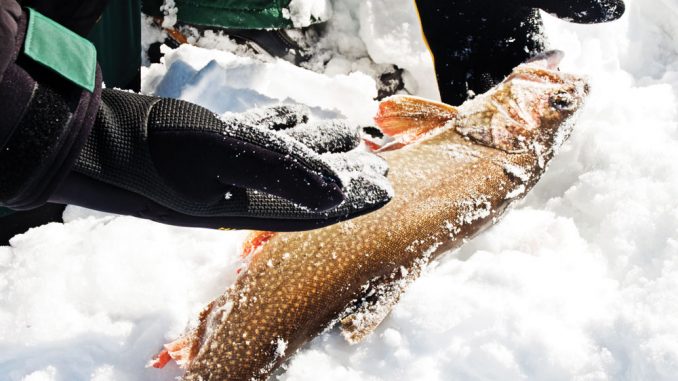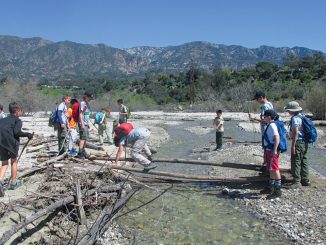
My grandfathers were farmers who lived through The Great Depression. My parents spent 20 years in the military before returning to Mississippi to purchase a hobby farm.
As a result, some of the people who influenced me the most knew how to make do with what they had. Of course, they didn’t call it “prepping”; they didn’t call it anything, because hunting, fishing, gardening and putting up food were just part of life. Not only was the food cheaper, it tasted better and had no chemicals added to it. The fact that it lasted for years was just an added benefit.
1.0 PLANNING AHEAD
1.1 Canning
This method is the most effective way to preserve ready-to-eat food to last a long time. This is especially true, because pretty much anything can be canned, either via a water bath or pressure cooking, including meat and fish. In fact, I learned about canning fish on the Kenai Peninsula, watching native Alaskans put up salmon. All they did was drop some spices into the bottom of a mason jar, shove some salmon in and drop it in a pressure cooker. It was still delicious when I ate it some time later.
1.2 Timing
Years ago, I watched my aunt pick green tomatoes in October and spread them out on newspaper in a back room. I didn’t understand what she was doing, but I also didn’t understand why my grandfather had planted tomatoes in July and August. Nevertheless, it made a lot more sense when we were slicing those home-grown tomatoes to go with Christmas dinner! Tomatoes will slowly ripen off the vine, providing fresh flavor and great nutritional value for months, and they can be canned in a variety of ways or even fried green.
1.3 Greenhouses
A self-contained growing environment can be one of the best tools for surviving, because it can provide food all year long. Greenhouses are best when built before a situation happens, although setting one up in fall and early winter is better than nothing. A quick, simple one involves just a frame and lots of clear plastic. You can also buy kits that are available in a number of styles and sizes.
1.4 Cold Kills
While greenhouses are the best way to grow vegetables in the colder months, the greater danger to plants is frost, not temperature. Therefore, you can extend growing time by a few weeks to a month by using tomato stakes and clear plastic to keep the weather at bay for a while. Unfortunately, sustained freezing temperatures will kill plants.
2.0 EAT YOUR GREENS
2.1 Edibility
Trying to figure out which plants are edible during a survival situation can be quite difficult. Consequently, plan ahead; purchase and study an edible-plant guide. This can be a godsend, particularly in winter, when very few fresh plants are available to eat. Be sure to find a guide that concentrates on the area where you plan to endure the situation.
2.2 Edibility Test
The best way to determine whether an unknown plant is edible is the Universal Edibility Test; but, in a pinch, place moistened plants on the outside of the lip for a few minutes. If there is any inflammation or burning of the lip, the plant is poisonous. If not, it is usually safe. However, it is best to learn which plants are edible in your area before this skill is needed.
2.3 Nuts are excellent food sources, especially in the fall. Hickory nuts and chestnuts can be roasted and eaten whole or ground up to add to other dishes. Acorns are particularly abundant but must be leached to remove bitter-tasting tannins. Afterward, they can be roasted or boiled and then eaten or even ground up to make flour. White oak acorns are among the best.
3.0 PURSUIT OF PROTEIN
3.1 Weapons
While modern firearms, bows, crossbows and other types of weapons are extremely effective, over millennia, man survived on much smaller tools, such as the slingshot and even the sling and stone. With practice, both can be used to take a wide variety of small game and possibly even larger prey. In addition, it is not very difficult to build a primitive bow and arrow.

Even small greenhouses can provide a great deal of food throughout the year—even during the coldest months.
3.2 Trapping
Running a trap line can be a great way to earn extra money, and it also keeps skills sharp and traps on hand and ready to use. Predators and furbearers, such as bobcats, raccoons and more, provide meat, and their fur makes great clothing and shelter.

Seasonings can last a long time, but they still need to be stored with as little exposure to air and sunlight as possible. Small canning jars and resealable vacuum pouches work well. Some spices can be stored whole and then ground later.
3.3 Snares
Even without the benefit of modern materials, early men and women learned how to use snares and deadfalls to trap game. Both are very simple to make, especially a metal wire choke snare, although shoe and boot laces or other types of cordage can be used in a pinch.

Dutch ovens are great cooking tools, because they can be used to create almost any dish. They come in a variety of sizes.
3.4 Fish Traps
A fish basket trap is well worth the time to learn how to construct. This simple, but effective, device can be built by weaving branches together in a long cone, similar to a basket. The front should have a wide opening to allow fish to enter; it should also narrow toward the other end to prevent fish from exiting. These traps work best in freely flowing waters.

Chestnuts can be steamed or boiled, but roasting is the traditional method, and it is pretty easy to do over an open fire.
3.5 Cold Fish
Even in winter, fish can be caught, whether the water’s surface is frozen over or not. Limb lines and automatic fishermen can be used to fish all day and night while you’re otherwise occupied. Tie a baited line to a supple limb near the water and let the strength of the limb fight the fish. Alternatively, dig a hole through the ice and tie the line to a stout limb laid across the hole. Check these lines regularly to gather your catch.
3.6 Hunting
Hunting is one of the best methods for obtaining large amounts of protein-rich meat. However, finding effective areas are crucial for your success. Because everything you’re after must drink, consider setting up downwind of a water source, especially during early morning and late evening. Another place to consider is a trail junction.
4.0 MENU HELP
4.1 Simple Seasonings
Spices last a long time, but they will lose flavor, particularly if exposed to air. Look for pre-mixed packages, such as taco and ranch dressing mixes, that are on sale. Vacuum-seal them in bunches and store them with food caches. Most mixes can be used on both meats and vegetables.

Root cellars, such as these in Canada, are among the earliest forms of keeping food preserved. They are easily built by tunneling into a hill or digging into the ground and then adding an insulating barrier to protect them from the weather.
4.2 Salt
Those who live near the coast have an easy way to obtain some seasoning, because saltwater can be boiled down (which also kills bacteria and other disease-carrying organisms). Alternatively, simply leave it out in the sun to let the water evaporate. If larger quantities can be obtained, the salt can be used to preserve meat and fish for future use.
4.3 Can Do
Canned goods, whether commercial or homemade, can be used to make a variety of dishes that can go a long way with the right seasonings. One of my favorites uses one can each of corn, kidney beans, pinto beans and black beans, three cans of Ro-Tel tomatoes, one can of green chilies and a packet each of ranch dressing mix and taco seasonings. Add ground meat to beef it up or some additional water to make it stretch.
4.4 Backwoods Bakery
Baking can be difficult outside, but Dutch ovens have been used for centuries to make a variety of meals and breads. You can even gather coals around steel pots or spread flour mixtures on hot rocks to cook bread. A doughy mixture of flour and water can even be wrapped around a stick and held over a fire. Acorns, properly prepared, can make a decent bread.
5.0 STORAGE
5.1 Cold Storage
Cold is used to preserve many foods—think the refrigerator and freezer. In the winter, foods that should be kept cold can be placed outside to stay fresh. The ideal fresh food temperature is 35 to 37 degrees (F), while frozen foods are best stored around 0 degrees (F). Be sure to store food items in shady areas and protect them from predators … both two- and four-legged.
5.2 Root Cellars
Underground storage is an excellent way to keep food cold without freezing. An appropriate area can easily be built by digging a hole into the side of a hill or into the ground. Be sure to dig down at least 4 feet and use tree saplings to keep food off the ground, as well as for insulation. Be sure to add a secure door to keep out unwanted “guests.”
Editor’s note: A version of this article first appeared in the Prepper Fall, 2018 print issue of American Survival Guide.






Be the first to comment